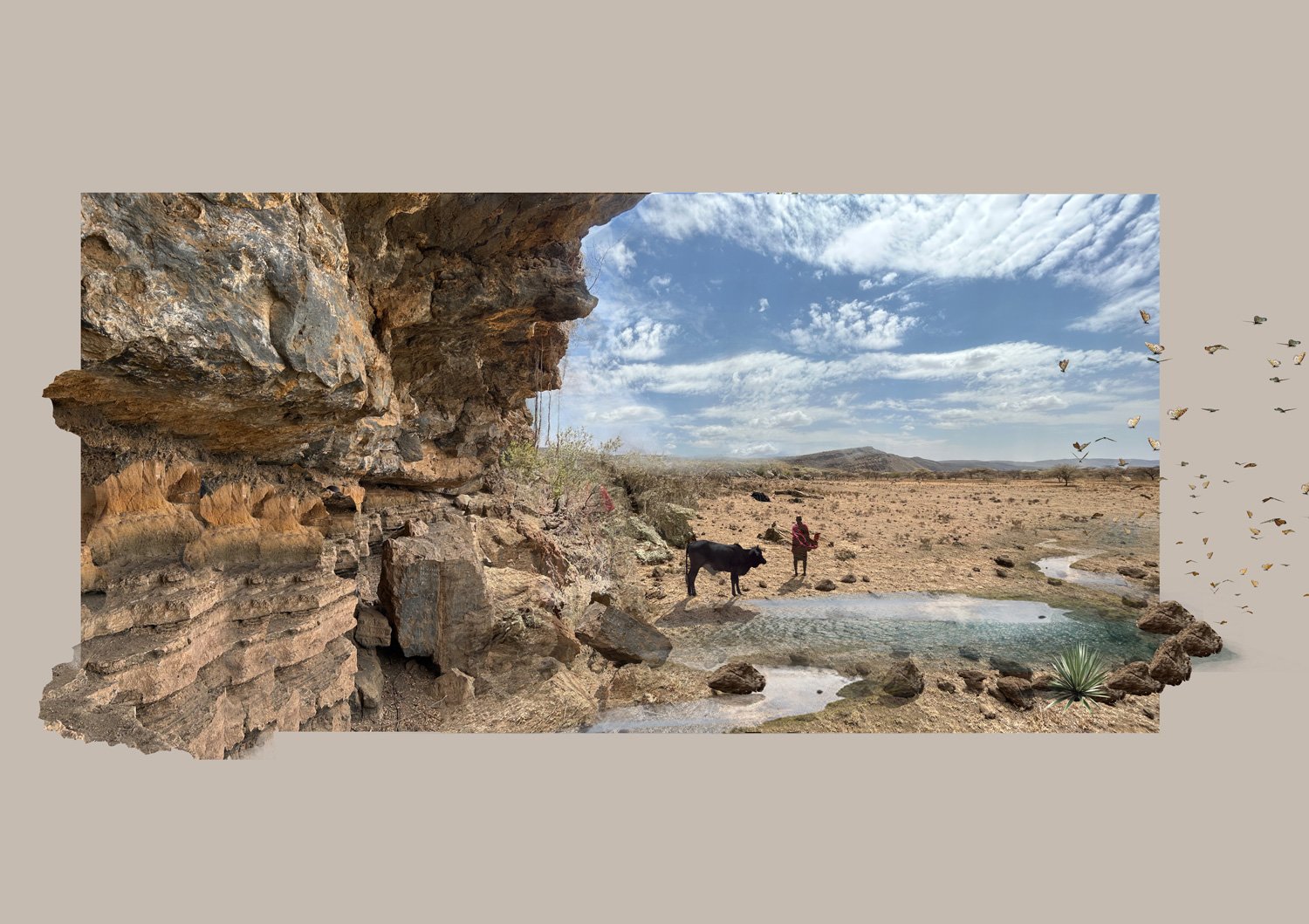ANTHROPOCENE MUSEUM 10.0 | Reversing Water scarcity on Mt Suswa
As a grounding chapter of The Anthropocene Museum, we return back to the Great Rift Valley where it all began, revisiting the first site of our Anthropocene Museum 1.0 on Ol Doinyo Nyukie / Mount Suswa. This project looks to tackle the current pressures and demands of urbanisation on such a pristine and remote site that remains next in line for the government’s plans to exploit the rich resources of geothermal energy, with Kenya being the seventh highest producer in the world. Equally to address the impacts of climate change that is causing perennial droughts as highlighted in AM.8.0. We have embarked on a journey with the re:arc institute to settle a base for the museum that aims to primarily address the immediate challenges faced by the community.
For this rural-urban research project, we take a decentralised approach, looking outside the city to examine and address the myriad of ways that it’s anthropogenic pressures are negatively affecting a resilient Maasai people, who are now struggling to adapt their ingenious ways of living that have sustained them for thousands of years. The Maasai community of Suswa are facing the impacts of the worst recorded drought in forty years, with their livelihood of rearing cows and goats decimated and their ability to earn a living drastically affected.
Anthropocene Museum 10.0 is an architecture and landscape project that looks to support and expand the community’s already proactive and resilient approaches to managing their diminishing water supplies through the creation of efficient and sustainable water reservoirs and steam harvesters. The project will generate a site-specific design intervention on the outer crater of the community’s conservancy. It is a project about respect and restorative justice, working closely with the Maasai to co-design solutions that bolster their agency and Indigenous structures of governance, with a view to flourishing both human and more-than-human life on the mountain.
Mt Suswa’s Outer crater
We have leased one hundred acres to work on community land along the outer crater of the mountain. Qur primary focus being to restore the rainwater harvesting reservoir, and optimize the steam harvesting potential of the immediate furmhole vents during the drought season.
Site study of the existing topography and rainwater catchment geography of the leased site.
Register of life on Suswa Mountain.
AM 10.0: Project outline short film.






